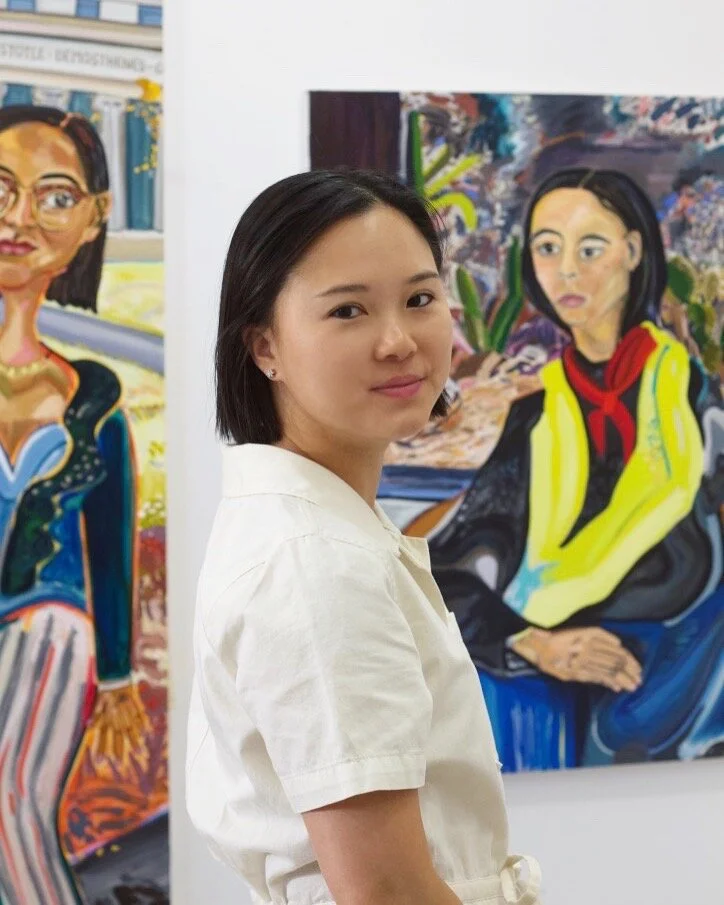In Conversation with Zachary Tye Richardson: Performance Art That Elevates Black Queer Representation
Portrait by Birgit Buchart.
A frank, tender, and generous conversation with Brooklyn-based performance artist Zachary Tye Richardson on the heaviness and restlessness of this moment. Richardson is drawn to physical investigations, as well as movement, voice, theatre, fashion, and other ideas. I can remember the first time I saw her/them/him perform at Long Gallery in Harlem in 2018, the way in which they harnessed both stillness and power while interacting with sculpture in their movements, was captivating. Richardson offers authentic gems on how they dismantle stereotypical queer tropes, inserting patience in their art, and amplifying an intersectional and urgent All Black Lives Matter dialogue.
How are you feeling at this moment?
As the weeks go by it seems like every other day another Black life is taken. With each life, hopelessness consumes me. It‘s discouraging to think that with all the noise around the Black Lives Matter Movement, the sentiment continues to be incomprehensible. Living in New York, I’m in this bubble that is primarily “woke” when it comes to these issues. Media has been a constant reminder that there is ignorance running rampant in a lot of suburban America. Unfortunately, I have some family members in the South that feed into this mind set and I’m currently on my way to confront them in person. It’s so vital to get uncomfortable and have the conversation.
My mother always said, “respect your elders'', and because of that I suppressed my ideologies at the holiday functions. No more. This movement has revitalized my position and is giving me and others the courage to speak up about perpetual discrimination. As a genderqueer biracial (half-white, half-Black) person existing in America, loneliness swallows me when visiting family in the South. If it isn’t narrow-mindedness about the importance of Black dignity from my white side, then it’s homophobia/transphobia from my Black side. It can be draining, but it doesn’t stop me from ripping the band-aid off and calling out wrongs no matter what the age gap.
“As a genderqueer biracial (half-white, half-Black) person existing in America, loneliness swallows me when visiting family in the South.”
Portrait by Birgit Buchart.
How do you balance self-care and your performative practice during quarantine?
Self-care has been redefined during quarantine. My mental health has been unstable and consumed with anxiety. Meditation has helped and using it as a tool in my performative process revived my development methodology. Patience has been a recurring thread in the generation of my work. Through this epiphany, came the connection of patience practiced through endurance, movement accumulation, and durational pursuits. I realized that through the motif of patience, there was a mirroring of meditation in my own practice. As a millennial in America, I noticed how we’re accustomed to everything being fast-paced. From technology, to the delivery of our food, we don’t have a second to spare and our attention span has been depleted as a consequence.
When I started the undertaking of my first performance piece in 2016, I was eager to challenge this mentality by giving viewers a reason to pause. Composing this stillness required me to somehow decode the formula for captivation. An impossible endeavor, I became intrigued by the differentiations between performance and entertainment. Performance is commonly labourful and occasionally pedestrian, while entertainment is mostly fervent in its desire for attention. I started thinking of them as personalities; performance being introverted and entertainment extroverted. Through this analysis, I’ve been tasked to find a middle ground between the two. This neutral territory reproves me back into patience while allowing me to surrender to the aesthetics of amusement.
Can you talk about the healing aspects of your performance art related to anti-queer Blackness?
Sure. I’ve been working on one piece in particular entitled Available Bodies, that has to deal with these aspects. This performance series started in 2017 when I was tired of queer identities being portrayed in a stereotypical manner through media. I wanted to investigate the logistics behind this and traced my mannerisms from childhood. I noticed how I wasn’t allowed to fully express myself because of the hyper-masculinity from the Black men in my life. I was constantly trying to fit into their definition of what a Black man was supposed to be. All the while knowing that being a “man” was not my destiny. Through this discovery, I wanted to reach out to other queer friends and use them as a mirror. This led me to documenting their stories through a series of audio interviews. It was scary to see the parallels in our journeys and it felt like there was comfort in knowing that we were not alone. These memories acted as interpersonal safe keepings and inspired a series of performances. We witnessed the beginning of healing by speaking these experiences into existence. I personally was able to manifest this internal rage into choreography. Many of my performances are what I like to call “queer offerings” which is my way of displaying anti-patriarchal acts of self-acceptance, empowerment, and personal refuge. If I can give one queer person the courage to walk in their truth, then my work is burgeoning.
“Many of my performances are what I like to call “queer offerings” which is my way of displaying anti-patriarchal acts of self-acceptance, empowerment, and personal refuge. If I can give one queer person the courage to walk in their truth, then my work is burgeoning.”
Available Bodies (studio process), 2019. Courtesy of Yekaterina Gyadu.
We know that All Black Lives Matter, but can you talk specifically about protecting Black trans, Black queer, and Black non-binary lives at all costs?
I’m not sure that we ALL know that. Saying Black Lives Matter seems to be a caveat for Black cis/hetero men’s lives matter because of the constant police brutality they’ve endured. While this is urgent and needs to be addressed, there is a lot to dissect internally in the Black community. What about our Black women? It’s disheartening to see Black women and trans people being killed time after time by the people who should be protecting us. Instead we have mobs of Black people mutilating trans people and bystanders in this community recording it. Underneath this documentation, we have our own people giving excuses for the folks committing the act. At times, it feels like we only have support from Black women, non-Black allies, and other queer/trans people. This cycle has to be stopped and the only way for us to really begin change is for Black allies to talk about these issues. I have yet to see hardly any Black cis/hetero men standing up and saying Black Trans Lives Matter. There seems to be an underlying fear from these men that if they were to say this, that would make them trans attracted. That of course, would obliterate their masculinity. We need support from the heavy hitters of different industries like music, fashion, and entertainment in order for the community to open their minds. Stand up for what is right and put your ego to the side because at the end of the day, silence is the ultimate violence.
“I have yet to see hardly any Black cis/hetero men standing up and saying Black Trans Lives Matter. There seems to be an underlying fear from these men that if they were to say this, that would make them trans attracted. That of course, would obliterate their masculinity.”
What does Pride mean to you in 2020?
In 2020, Pride signifies community. On June 14, 2020, there was a Black Trans Lives Matter march from the Brooklyn Museum to Fort Greene park. 15,000 people were in attendance and dressed in all white. This felt like history, allyship, and most importantly love. It was so special to hear testimonies from people like Ceyenne Doroshow, founder of G.L.I.T.S. (Gays and Lesbians Living in a Transgender Society), speak about raising $1,000,000 to buy equity for housing trans people. “If y’all could smell me right now, y'all would know I smell like good pussy!” Doroshow proclaimed. In that moment I realized that this is what Pride should always be about; professing your prominence because of what you’ve paid forward in your community. No matter how large or small that is, realizing that it is vital. Speaker Melania Brown, sister of Layleen Polanco, a transgender woman mysteriously found dead in her cell at Rikers Island was full of passion and gave me the fuel to keep fighting alongside her. This rally was a reminder that with all the transphobia and homophobia there is in the world, there is also love out there waiting to be cultivated. One homemade sign read, “LIBERATION IS INTERSECTIONAL” and this perfectly described what is necessary for this movement. Solidarity is the key to true emancipation. Only once we’re on the same page can we have change. We must think outside of our race, class, gender, orientation, etc. Getting there requires us to confront our prejudices, unlearn ways in which we were told to think, and dismantle systematic oppression. The journey calls for us to become one community.
“Solidarity is the key to true emancipation. Only once we’re on the same page can we have change. We must think outside of our race, class, gender, orientation, etc.”
Available Body, 2018. Courtesy of Travis Emery Hackett.










